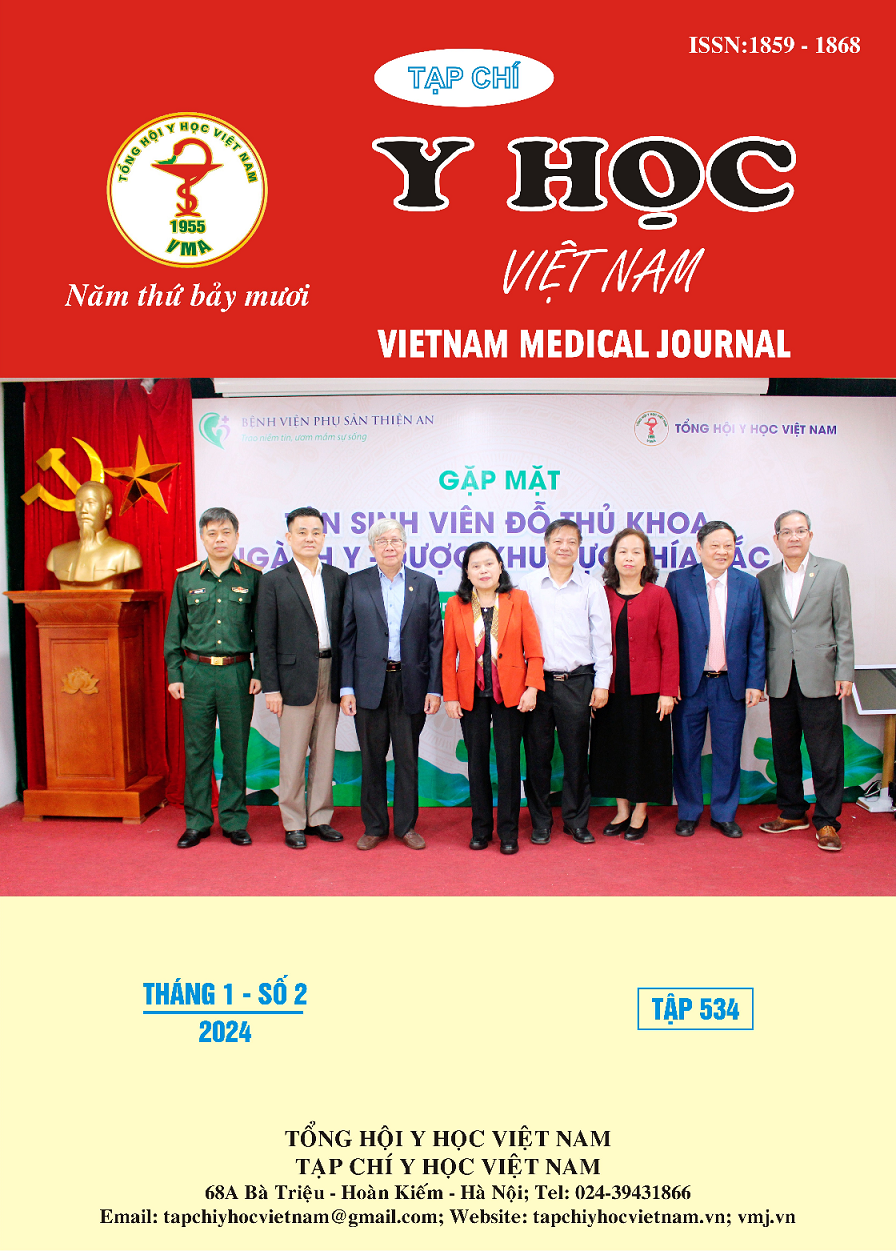MID-TERM RESULTS OF LEFT SUBCLAVIAN ARTERY REVASCULARIZATION IN PATIENTS WITH THORACIC ENDOVASCULAR AORTIC REPAIR
Main Article Content
Abstract
Background: Revascularization procedures of the subclavian artery to create a convenient proximal area for stent graft placement to treat thoracic aortic disease are necessary. According to research by author Scali and colleagues (n=139) [3], stroke complications related to the left subclavian artery occlusion group accounted for a higher rate than the left subclavian artery revascularization group, times 15.8% and 8.9% of the study sample, respectively. Author Feezor RJ and colleagues (n=196), evaluating brain and spinal cord complications, noted that the left subclavian artery occlusion group had a higher risk than the left subclavian artery revascularization group [1]. Therefore, revascularization procedures should be considered in patients with thoracic aortic disease requiring stent graft placement. Methods: Retrospective description of case series. Results: The study had an average age of 65, ± 10.2 years; the majority were male, and hypertension and smoking accounted for 88.2% and 76.5% of the study sample, respectively. Aneurysm and dissected thoracic aortic lesions accounted for 52.9% and 41.2% of the sample. Transposition of the left subclavian artery into the left common carotid artery accounted for 53.3%, and the left subclavian artery to the left common carotid artery bypass with prothese accounted for 53.3% of the sample. Technical success rate reached 88.2%, complications recorded hematoma accounted for 11.8%, and stroke accounted for 5.9%. In the mid-term period, the rate of blood circulation in the head accounted for 94.1% of the sample. Conclusion: Left subclavian artery revascularization procedures in patients with stent grafts to treat thoracic aortic disease were performed safely and effectively, with few complications.
Article Details
References
2. Matsumura JS, Lee WA, Mitchell RS, Farber MA, Murad MH, Lumsden AB, et al. The Society for Vascular Surgery Practice Guidelines: management of the left subclavian artery with thoracic endovascular aortic repair. J Vasc Surg 2009;50: 1155-8.
3. Scali ST, Chang CK, Pape SG, Feezor RJ, Berceli SA, Huber TS, et al. Subclavian revascularization in the age of thoracic endovascular aortic repair and comparison of outcomes in patients with occlusive disease. J Vasc Surg 2013;58:901-9.
4. Protack CD, Smith A, Moennich LA, Hardy D, Lyden SP, Farivar BS. Midterm outcomes of subclavian artery revascularization in the setting of thoracic endovascular aortic repair. J Vasc Surg. 2020 Oct;72(4):1222-1228.
5. Grabenwöger M, Alfonso F, Bachet J, et al; European Association for Cardio-Thoracic Surgery (EACTS); European Society of Cardi- ology (ESC); European Association of Percutaneous Cardiovascu- lar Interventions (EAPCI). Thoracic Endovascular Aortic Repair (TEVAR) for the treatment of aortic diseases: a position statement from the European Association for Cardio-Thoracic Surgery (EACTS) and the European Society of Cardiology (ESC), in colla- boration with the European Association of Percutaneous Cardi- ovascular Interventions (EAPCI). Eur J Cardiothorac Surg 2012;42 (01):17–24
6. Xie W, Xue Y, Li S, Jin M, Zhou Q, Wang D. Left subclavian artery revascularization in thoracic endovascular aortic repair: single center's clinical experiences from 171 patients. J Cardiothorac Surg. 2021 Jul 30;16(1):207.
7. Cooper DG, Walsh SR, Sadat U, Noorani A, Hayes PD, Boyle JR. Neurologi- cal complications after left subclavian artery coverage during thoracic endovascular aortic repair: a systematic review and meta-analysis. J Vasc Surg. 2009;49:1594–601.
8. Cinà CS, Safar HA, Laganà A, Arena G, Clase CM. Subclavian carotid transposition and bypass grafting: consecutive cohort study and systematic review. J Vasc Surg. 2002 Mar;35(3):422-9.
9. Schaffer JM, Lingala B, Miller DC, Woo YJ, Mitchell RS, Dake MD. Midterm survival after thoracic endovascular aortic repair in more than 10,000 Medicare patients. J Thorac Cardiovasc Surg. 2015 Mar;149(3):808-20; discussion 820-3.


